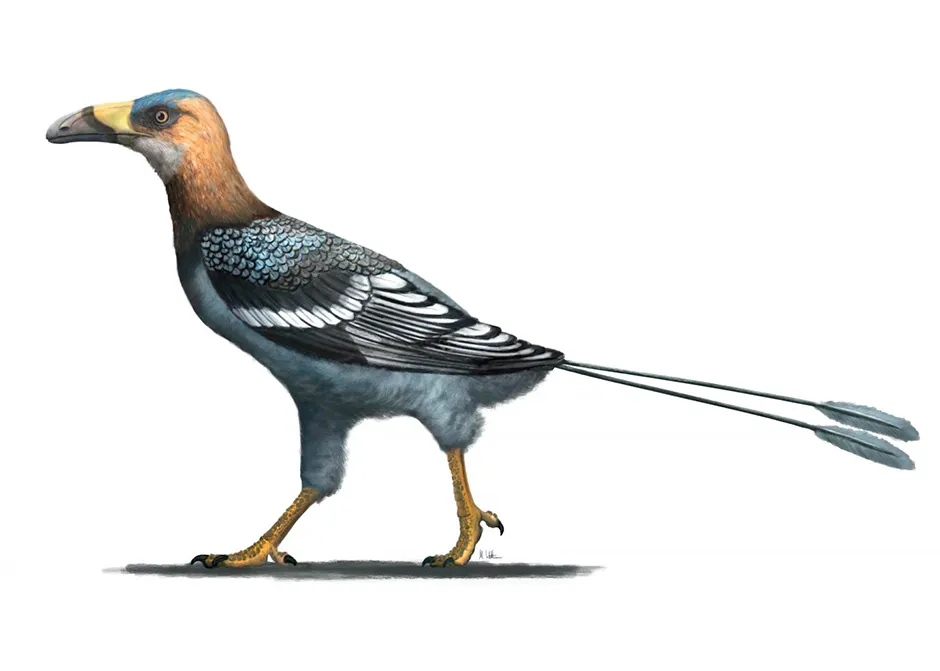A new species of bird from around 68 million years ago has been discovered on the island of Madagascar, and its unusual beak could give new insights into how modern birds evolved.
Discovered from a single, nearly complete skull that was fossilised after it was buried in muddy debris, Falcatakely is a crow-sized bird with a scythe-shaped beak. This is not at all unusual in modern birds, and is similar to hornbills and toucans. However, there’s a gap of tens of millions of years between these species evolving.
“What is so amazing is that these lineages converged on this same basic anatomy despite being very distantly related," said Dr Ryan Felice, lecturer in human anatomy at University College London and one of the study’s authors. In fact, this is the first time such a beak shape has ever been found on a bird from the Mesozoic era – the era that contains the Cretaceous, Jurassic and Triassic periods.
Looking underneath Falcatakely’s skin reveals another unusual feature. Though its face may have the appearance of a modern bird, its underlying bone structure is much more like a dinosaur’s. Modern birds have a beak made mostly of one large bone, called the premaxilla. Ancient birds, like the dinosaur Archaeopteryx, instead had two, with a small premaxilla and a large maxilla.
Read more about the evolution of birds:
- Dinosaur fossil could be the world’s first-ever bird species
- Bird-like lungs helped dinosaurs rule the roost
- 200 million-year-old fossil shows dinosaur 'walked like a guineafowl'
So, Falcatakely developed a modern face shape without a modern facial structure. "Falcatakely might generally resemble any number of modern birds with the skin and beak in place, however, it is the underlying skeletal structure of the face that turns what we know about bird evolutionary anatomy on its head," said Prof Patrick O'Connor, an anatomist at Ohio University.
The team haven’t been able to study the skull directly. Bird fossils are rare, because their skeletons are so fragile that they are usually destroyed rather than fossilised. The specimen is so fragile that they couldn’t even remove it from the rock. Instead, the team used high-resolution micro-computed tomography to scan the fossil, which they then used to digitally reconstruct it.

"The discovery of Falcatekely underscores that much of the deep history of the Earth is still shrouded in mystery," added O'Connor, "particularly from those parts of the planet that have been relatively less explored.
"The more we learn about Cretaceous-age animals, plants, and ecosystems in what is now Madagascar, the more we see its unique biotic signature extends far back into the past and is not merely reflective of the island ecosystem in recent times."
Reader Q&A: Why were birds the only dinosaurs to survive the mass extinction?
Asked by: Edward Seymour, Hove
The asteroid that caused the extinction event at the end of the Cretaceous period struck Earth with 60,000 times the energy of the world’s entire nuclear arsenal. The atmosphere would have glowed red hot for several hours and all the large dinosaurs that couldn’t burrow underground or hide underwater were immediately roasted.
When the smaller species came out of hiding they found a charred landscape and the air so thick with soot and sulphur dioxide clouds that sunlight was almost completely blocked out for the next year. It was too dark for photosynthesis, so the herbivores died, then the carnivores.
Birds are descended from the maniraptoran dinosaurs but they had two important adaptations that helped them survive. First, they had beaks instead of teeth, which allowed them to crack open seeds and nuts buried in the topsoil.
Second, their relatively large skull capacity suggests that they were more intelligent than the other reptiles. They may have lived in more complex social groups that could cooperate and adapt to find new food sources in the radically different post-apocalyptic landscape. This allowed them to eventually outcompete any other species of small dinosaur that might have survived the initial impact.
Read more: